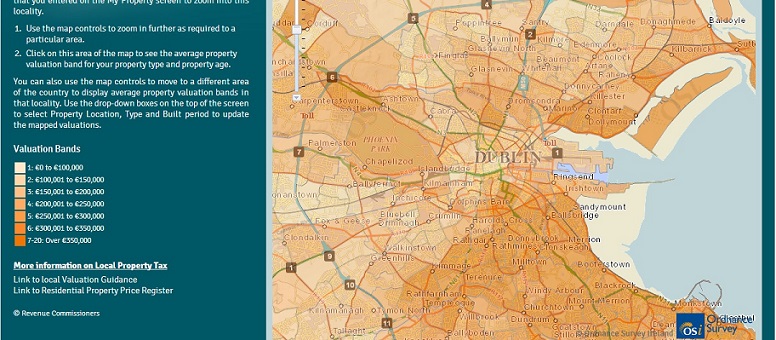Dear Pat,
I’d just like to respond to this.
Do we have a lack of female engineers? of course we do, do we have a lack of female mechanics? of course we do.
The point of this was not to point out inequalities it was to point out that we are already equal and I just don’t get it
(emphasis mine)
There just seems, to me, to be something contradictory here.
How equal women really are to men in tech is less than clear. Marissa Mayer has a nursery right next to her office. How many male tech CEOs have? Why was it news that she has?
Whether “women in tech” movements are the right way to respond to this is debatable. Changing attitudes takes – very often – a generation. Arguably it’s getting better but…the position of women in most industries is culturally driven rather than anything else. So is the position of men. And they don’t have nurseries next to their offices when they are CXs. Is this right? I’m not sure that it is, to be honest.
I have absolutely had it up to here with the term “women in tech”
You seem to be overwhelmed with Women in Tech.
How is this happening to you?
It’s not happening to me. I’m not overwhelmed with anything other than Big Data which I have had doubts about for a while anyway and I am a woman in tech, I’m on the Ireland Girl Geek dinner mailing list and that’s about it. What mailing lists are you on? What is turning up in your RSS feeds? Who are you following on twitter that you are so overwhelmed?
These are serious questions, by the way. I’m not getting the same onslaught in my media as you appear to be. I’m not even getting anything at all on the subject apart from an email every couple of months to invite me to a couple of tech talks which are about specific tech rather than a Pinky & the Brain-esque how can we take over the world tonight exercise.
I’ve had a few too many people assume I was male because I was online and technically competent in one or other field or arena over the years – and Neo could get away with assuming Trinity was a guy in the first Matrix movie because culturally, she was less than likely to be a female. Why is that? How do we change that?
And there’s this:
 Individual women get to represent all women in general terms in a way that men don’t get to represent all men. “Wow, boys suck at math”. The closest a boy will come to being in the position of the girl in the righthand panel above is in a generalisation like “Wow, Americans suck at maths”. I mean, that attitude sucks as well. Some Americans are very good at maths. A lot of them are at Princeton.
Individual women get to represent all women in general terms in a way that men don’t get to represent all men. “Wow, boys suck at math”. The closest a boy will come to being in the position of the girl in the righthand panel above is in a generalisation like “Wow, Americans suck at maths”. I mean, that attitude sucks as well. Some Americans are very good at maths. A lot of them are at Princeton.
It’s the same with drivers of course. You see one woman take a roundabout with a phone stuck to her ear and it’s “bloody women drivers”. Some of those drivers have beards though, and they look kinda like men.Far be it from me to make assumptions but… But we don’t tend to complain about bloody men drivers.
I’m really glad that you don’t look at people’s sex when you’re hiring. But you’re a single data point and your location on the curve is undetermined and you can’t generalize your experience on to everyone else.
You shouldn’t.
That being said, we need more people like you arranging their recruitment, looking at talent. This doesn’t just benefit women of course – there are quite a few cohorts who come a cropper in the face of prejudice.
Some places are fine. Some places are not fine. A lot of places are on a continuum somewhere in the middle. And people’s experiences vary. We may design perfect data structures but humanity and human behaviour typically don’t fit in to one. If they did, economic forecasting would be a lot easier and there would be any product launch failures because we could model their behaviour far more effectively.
In my view, as more and more kids get involved in things like the Coderdojo movement, and as more kids see what you can do with things like scratch and writing iOS games, and more STEM related summer camps (DCU – take a bow here) and things like the DIAS doing special maths support courses, and things like the Gallery of Science in Dublin and Blackrock Castle Observatory, we’ll see more girls getting involved. It’s a question of things becoming normalized. We’re used to women driving their own cars here but there are some countries I would not do it in. We will get used to women, girls doing tech related stuff. Fantastically, the internet opens doors to girls to get access to stuff they might not have necessarily had access to in their school libraries 10-15 years ago.
In the meantime, Etsy have done some super work on identifying female candidates which is worth a look – yes – they specifically targeted female candidates but it had other beneficial impacts for their business.
What is needed – to some extent – is mentoring and that’s where I see the value of women support networks where they work effectively.
I’m willing to go through whatever is necessary to go and give talks about working in technology and incidentally, if you decide at 25 that what you wanted to do at the age of 17 is not what you want to do now, that’s perfectly alright… all the different branches of tech, and how it’s not all bunker driven sysadmin (but if that’s what you’re into, far be it from me…) if there are schools which would be interested in that. I’ll need to know what is necessary but still…
I came across an interesting piece of information the other day (link is in French but is interesting if you’re into data visualisation). Women in France got the right to open a bank account and choose their own job without asking permission from their husbands on 13 July 1965. That’s less than 50 years ago. We take this sort of thing for granted now. Times change, times move on.
In the meantime, if I read your blog correctly you think things are equal but not equal. I can tell you they are probably 20 billion times better than they were 30 years ago when I wrote my first BASIC on an Atari 1200XL. Women are doing better now in a lot of places than they were in the 1980s – a lot better to be frank.
You’ve given birth, I think, to an interesting debate. I can see that by and large, you’ve caused some consternation. I think your delivery may have left a huge amount to be desired. That wins you, as you say, no brownie points. But the discussion is valuable.
Incidentally I love this idea. I wonder if we could do it in general in Ireland.
regards,
tl


